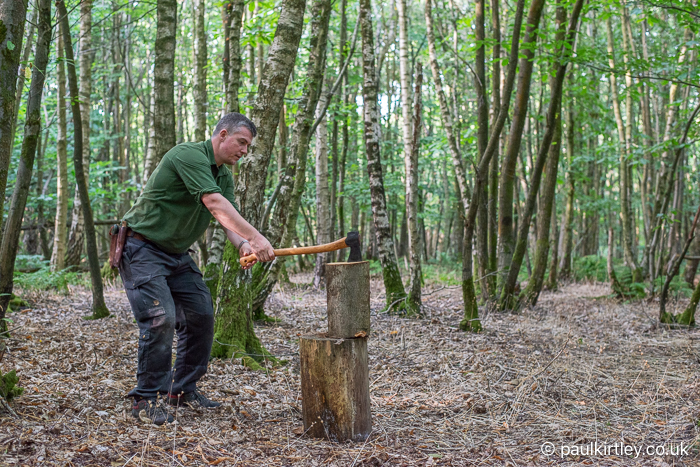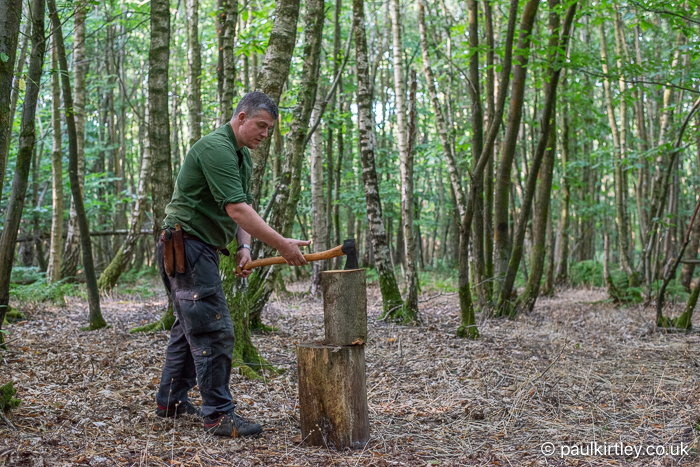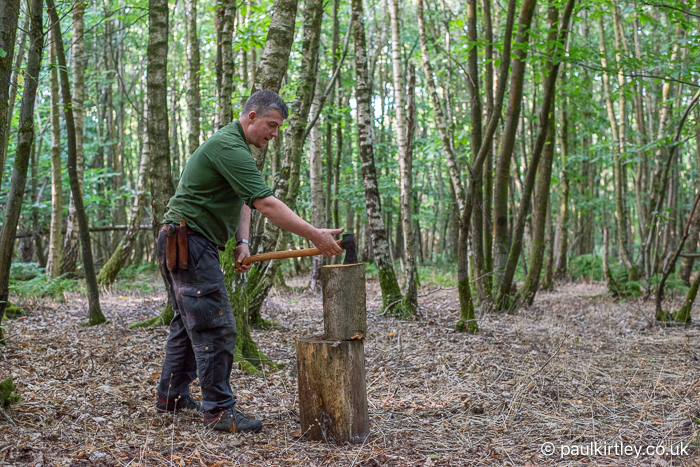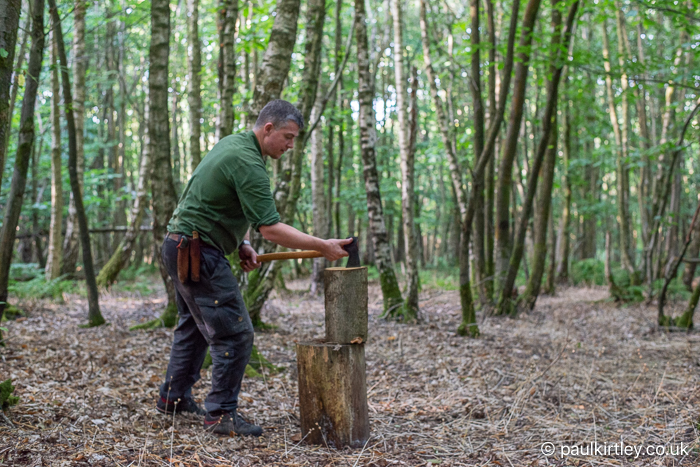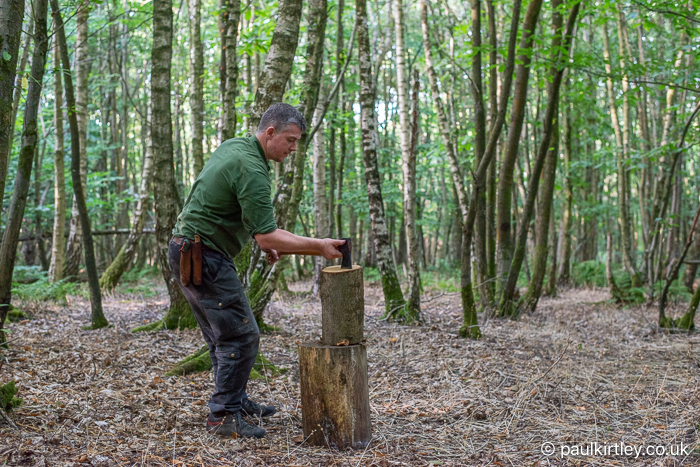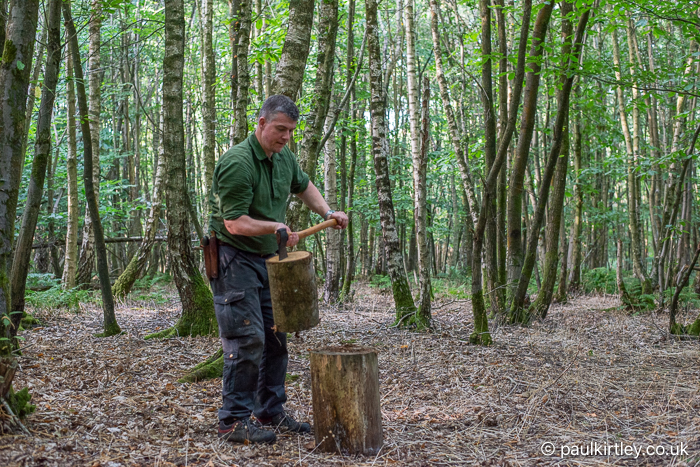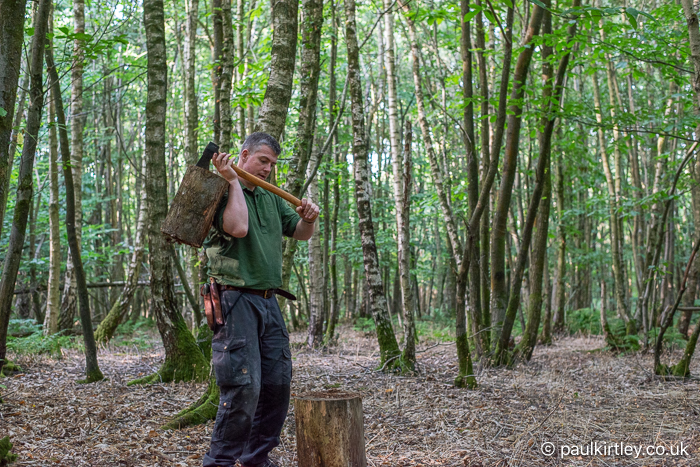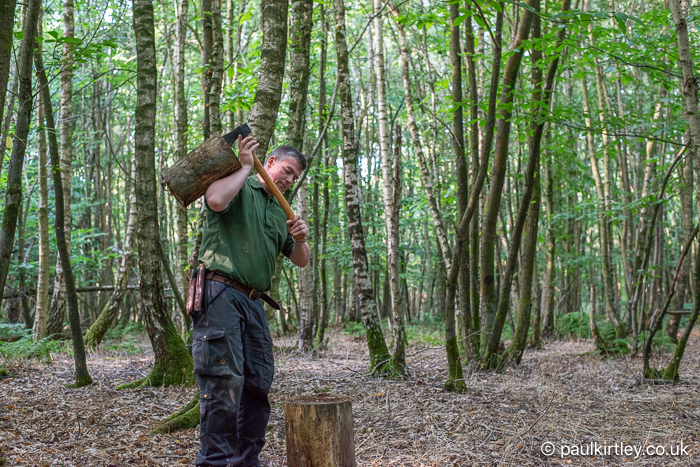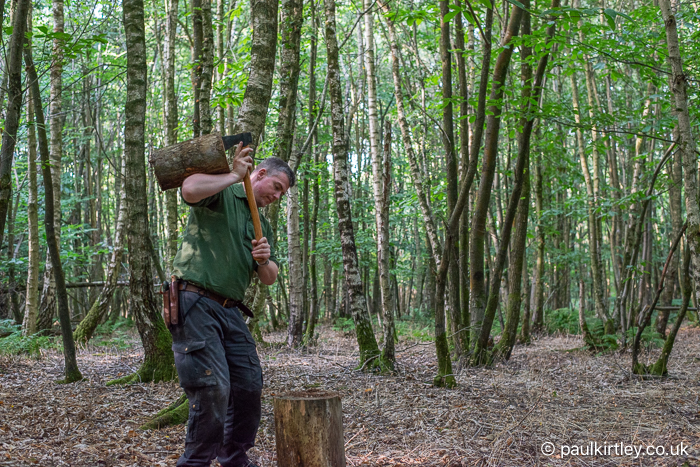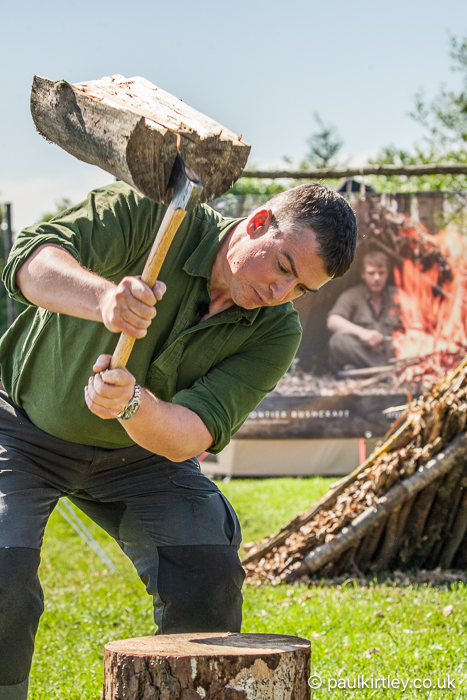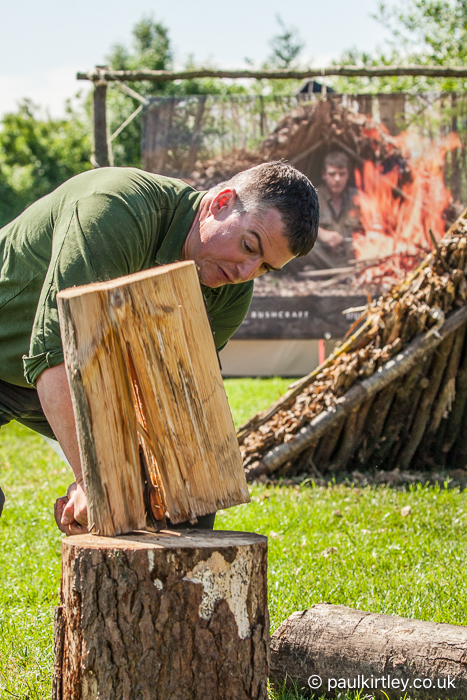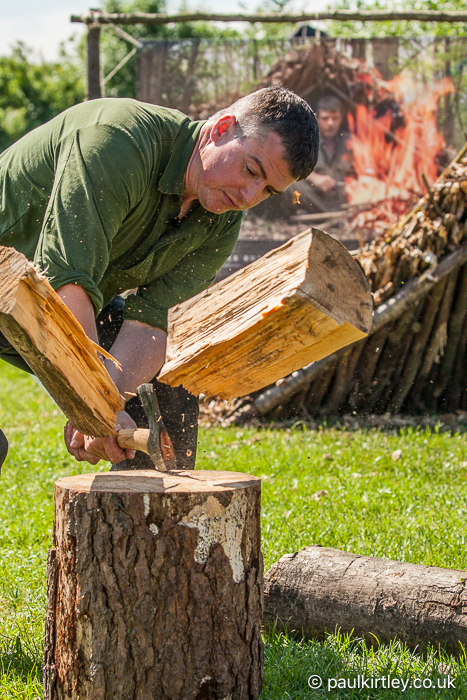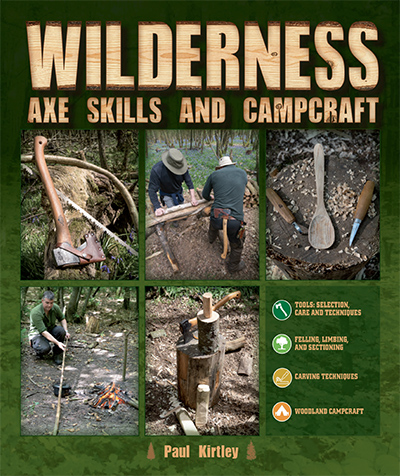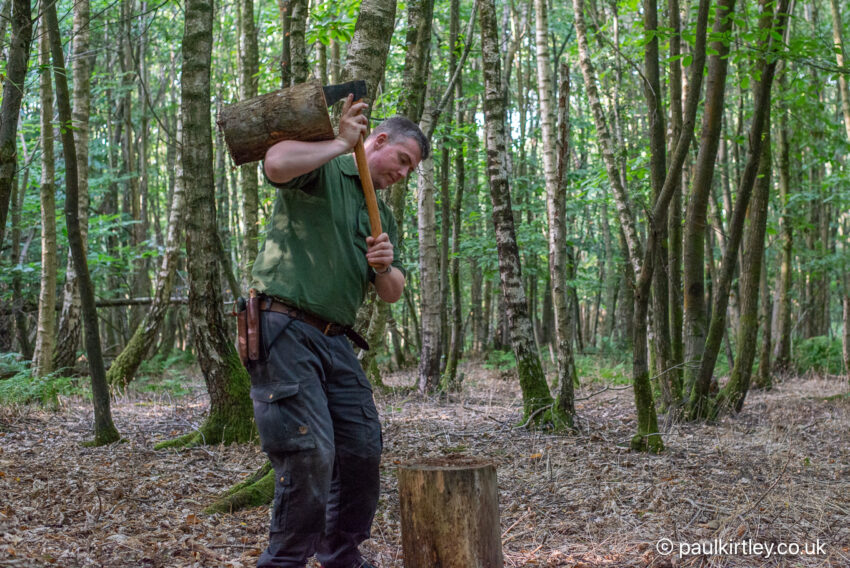
Employing the Inverted Axe Splitting Technique
Sometimes even a small round of wood can make a lightweight axe feel inadequate. But when your axe gets stuck, brute force isn’t the answer. That’s when the inverted axe technique comes into its own. I sometimes refer to this as “the upside-down technique”.
Remember, our small “bushcraft” axes tend to be relatively light. Their lower weight is one of the reasons we prefer them over larger, heavier axes on journeys where minimising weight is essential. With limited head weight and a narrow cross-section compared to splitting axes, there is a limit to what we can expect of our travel axes, though.
The Upside-down Axe Technique
There is a helpful shift in thinking following the realisation that the log we are trying to split may weigh considerably more than the axe we are using to split it. Gravity is our friend here. Instead of attempting to drive a lightweight axe downwards into a heavy log, it makes more sense to bring the heavy log downwards onto the axe.
Now, I’m not proposing you somehow fix your axe to the ground or the chopping block and throw logs at it. Once you have given your best shot to split the log with your axe in the orthodox manner, then we can invert the situation. If the axe is firmly embedded in the log and challenging to remove, this inversion is especially useful. Compared to removing a stuck axe from the log, it’s a relatively simple job to invert the situation, then drop the axe down again with the log on top.
There are two things you need to protect here. The first is your back. The second is your axe. Potential damage to either arises from excessive leverage. We’ve already established that the log we are dealing with is quite heavy, so lifting it requires us to be smart, protecting ourselves while also being energy efficient.
The lift, then as I call it, is an extension of how to lift an axe head efficiently anyway. Rather than trying to lift the axe and the block of wood from the end of the handle, you slide your hand forward so that it is as close to the head as possible. Lifting the axe near the head puts much less stress on your wrist and forearms, and, in comparison, lifting the whole package of axe and log feels easy from this point. This method of lifting from the head prolongs the axe’s life by placing far less stress on the interface between the head and the handle.
Once you have your hand in position to lift near the axe head, you then want to move your body closer to the objects you are lifting. Moving closer puts less strain on your shoulder and less leverage on your back. You are basically stepping underneath the axe and log as you lift it, all in one smooth motion.
One safety point here: don’t position your face over the axe head as you lift. If the log separates from the axe, you are suddenly lifting something much lighter with an excessive amount of force. You must position yourself to avoid hitting your face with the axe poll if the log drops off.
Upside-down Technique: The Lift
In the sequence below, I show the lift. Photos by Amanda Quaine.
Upside-down Technique: The Drop
The author demonstrates this technique with a half-length axe at a bushcraft event in the U.K. Photos by Martin Tomlinson.
Inverted Axe – Vertical Motion is Optimal
A few final points about this technique: The first is one of safety. There is potential for logs to fly off the chopping block and hit bystanders. As with any chopping on a block, make sure you have enough room around you. Second, the less vertically the axe and log strike the stump, the less force is pushed down onto the axe’s cutting edge. Instead, more movement goes into the log rotating off the top of the axe head. Ideally, at the point when the axe poll hits the block, the whole unit of axe and log should be travelling vertically. This vertical motion also means the log or logs are less likely to go tumbling off the block any great distance.
Inverted Axe Technique – Video Run-Through
Inverted Axe Technique – Key Points
- Slide your hand close to the axe head before lifting.
- Step in and bring your elbow tight to your ribs.
- Keep your face clear in case the log drops off.
- Use your shoulder and body movement for strength.
- Drop the log vertically for maximum efficiency.
- Always keep bystanders clear.
What if There is no Chopping Block?
You may be asking, “What if I have no block?” Good question, but remember that when undertaking the upside-down technique, you most likely have some sizeable rounds of wood to split. So, use one of the bigger rounds as your block. If you only have one large round, keep it as the block to split smaller pieces onto.
Want to Learn More Wilderness Axe Skills?
Buy a signed copy of my book Wilderness Axe Skills and Campcraft at wildernessaxeskills.com
You Might Also Like The Following On This Site…
Essential Axe Techniques For Backcountry Firewood Splitting
Optimising a General Purpose Axe and Saw Combo for Wilderness Travel
Axe Safety In Camp: Care Attention And Good Habits
